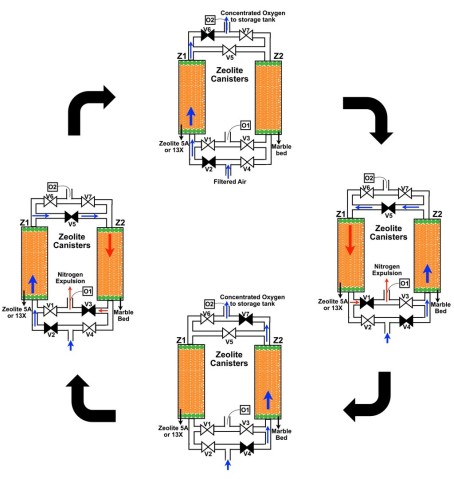Nonlinear and Non-equlibrium Physics Unit
Associate Professor Mahesh M. Bandi
Abstract
We are an experimental group with primary interests in nonlinear and non-equilibrium physics, both applied and fundamental. Our work often intersects with soft matter physics, applied mathematics, mechanics, and their application to biologically inspired problems. Our current focus is trained towards problems in interfacial fluid dynamics, granular solids, biomechanics of the human foot and fluctuations in renewable energy sources.
1. Staff
- Dr. Fabienne Ziadi, Postdoctoral Scholar
- Ms. Ayano Sakiyama, RUA
- Mahesh Bandi, Associate Professor
2. Collaborations
2.1 Solar photovolatic power fluctuations
- Description: An analysis of the character of power fluctuations in solar photovoltaic power at the scale of a single solar panel, a solar plant, and at the grid scale.
- Type of collaboration: Joint research
- Researchers:
- Prof. Golan Bel, Ben Gurion University of the Negev, Israel.
- Prof. Mahesh Bandi, Nonlinear and Non-equilibrium Physics Unit, OIST Graduate University
2.2 Biomechanics of Mudskipper locomotion
- Description: Experimental study of the biomechanics underlying the various modes of mudskipper locomotion.
- Type of collaboration: Joint research
- Researchers:
- Dr. Fabienne Ziadi, Nonlinear and Non-equilibrium Physics Unit, OIST Graduate University
- Prof. Madhusudhan Venkadesan, Department of Mechanical Engineering and Materials Science, Yale University.
- Prof. Mahesh Bandi, Nonlinear and Non-equilibrium Physics Unit, OIST Graduate University
3. Activities and Findings
3.1 DIY Oxygen Concentrator
This work was performed in response to the acute shortage of medical grade oxygen being faced in several countries due to the covid-19 pandemic, especially India where the second wave of infections were hitting unimaginable new highs in summer 2021. The air we breathe contains approximately 21% oxygen, 78.1% nitrogen, and trace amounts of other rare gases. Medical grade oxygen consists of 95% or more oxygen.
Oxygen concentrators are an attractive solution since they use atmospheric air freely available in unlimited quantities in our surroundings as their input and they are relatively safe. They do not involve cryogenic liquefaction of oxygen as is done with cylinders, so this cuts out huge engineering hassle and makes their design quite simple and tractable.
The method involves passing air through a bed of grains called artificial zeolites. The nitrogen is adsorbed (with a "d", not a "b", meaning it sticks) onto zeolite molecules and most (but not all) oxygen is allowed to pass through.
Assuming all nitrogen in the air passing through the zeolite is adsorbed, for every 100 liters of air pumped through the bed, we remove 78.1 liters of nitrogen and are left with almost (not all) 21 liters of oxygen and less than a liter of other rare gases. Terefore, the 21.9 liters of gas exiting the zeolite bed contains (21/21.9)x100 = ~ 95.6% of oxygen, which meets medical grade specifications. The crucial point is the assumption that all of the nitrogen in the air is being removed by the zeolite bed, and most of the effort goes into ensuring that.
3.2 Fins in transition: musculoskeletal adaptations in terrestrial mudskipper
The invasion of land by early lobe-finned fishes was accompanied by the loss of fin rays and the transformations of the fins into digits. Our understanding of evolutionary key features in the locomotor system of modern ray-finned fishes with advanced terrestrial behavior is still not well understood.
We investigate the musculoskeletal anatomy of substrate-based fins of the barred mudskipper, Periophthalmus argentilineatus, and compare it to a gobioiid relative and a more generalized teleost such as the zebrafish using a contrast-enhanced micro-CT imaging technique.
In contrast to their aquatic relatives, mudskippers demonstrate that gravitational trade-offs on land can be overcome through increased functional musculoskeletal fin complexity and that muscle diversification has initially evolved in the water. The evolution of these traits underlying adaptation to terrestriality in extant fishes may have been important in early tetrapodomorph fishes.
4. Publications
4.1 Journals
- M. M. Bandi , N. Ishizu , H.-B. Kang. Electrocharging face masks with corona discharge treatment. The Royal Society, https://doi.org/10.1098/rspa.2021.0062 (2021).
- Asada, K., Nakajima, R., Nishibayashi, T., Ziadi-Künzli, F., Lajbner, Z., Miller, J., Gutnick, T., & Kuba, M. (2021). Improving keeping for octopuses by testing different escape-proof designs on tanks for “big blue octopus” (Octopus cyanea). Applied sciences, 11(15), 8547. https://doi.org/10.3390/app11188547
4.2 Books and other one-time publications
Nothing to report
4.3 Oral and Poster Presentations
- Mahesh M. Bandi, "Electrocharging face masks using corona discharge treatment". ICTS-APS Satellite Meeting, International Centre for Theoretical Sciences, Bengaluru, India. March 15-18, 2022. Link: https://www.icts.res.in/discussion-meeting/sataps2022
- Mahesh M. Bandi, "Masking it all up: Two Soft Matter solutions for the COVID-19 pandemic." Jawaharlal Nehru Centre for Advanced Scientific Research, Bengaluru, India. March 25, 2022.
5. Intellectual Property Rights and Other Specific Achievements
Nothing to report
6. Meetings and Events
Nothing to report
7. Other
Nothing to report.








